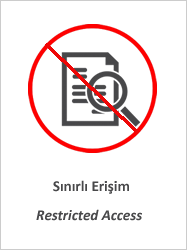Comparison of different fixation techniques for periprosthetic fractures: a biomechanical study of a new implant
Abstract
Introduction The ideal treatment method for periprosthetic fractures is controversial due to the risks of current methods. Single-cortex screw fixation in prosthesis may lead to implant failure. Therefore, we aimed to develop an implant that lowers the risk for complications. For this study, we designed and tested two new implant models. The first model was a plate with a combination of U nails and cerclage holes. The second model was a U nail plate with a screw, which combines a plate screw with U nail (staples). Our study aimed to compare the stability of two newly designed implants with classical treatment modalities. We used 27 (in 3 groups) artificial bone models and 9 different test models. Methods The ISO 7206-4:2010 (E) standards were used for 27 bones in nine groups tested under laboratory conditions. In our study, we examined nine different groups. In group 1, hip the prosthesis was extracted, and a revision femoral stem was embedded. In group 2, periprosthetic fractures were repaired with a plate and cable. In group 3, periprosthetic fractures were repaired with a plate and stapler. In group 4, periprosthetic fractures were repaired with a plate and stapler cable. In group 5, periprosthetic fractures were repaired with a plate stapler and screw. Groups 6 and 7 were the control groups. Group 6 was the only artificial bone group, and group 7 was the prosthesis embedded bone group. Group 8 was periprosthetic fractures treated with unicortical screw fixation with cerclage, and group 9 was periprosthetic fractures treated with unicortical screw fixation. Axial loading was applied to the bones. The yield strength of the system was determined by loading the synthetic bone models with a constant compression speed of 5 mm/min through the centre of motion using the Geratech SH 2000 testing system. During the tests, load and displacement values were recorded, and the stiffness of the models was calculated based on those values. Results According to our results, the greatest durability was found in the revision hip prosthesis group (1511 N), and the weakest performance was found in the plate with the stapler implant group (163N). When comparing the data of groups according to compression, significant differences were found in group 2 with groups 1, 4, 5, and 7; group 3 with group 1; group 8 with groups 1 and 5; and group 9 with 1, 5, 7, and according to breakage, significant differences were found in group2 with groups 1, 3, 5, and 7; group 3 with group 1; group 8 with groups 1 and 5; and group 9 with groups 1, 5, and 7 (p<0.001). Discussion The revision hip prosthesis treatment for periprosthetic fractures showed the best performance, followed by the plate with stapler screw. In older patients, U nail-augmented implants may be a good alternative for periprosthetic fractures. Unicortical screw and cerclage wire combination fixation results were unsatisfactory results in this study. Conclusion This is an experimental study, so further studies, especially patient-specific studies, should be made to expand the findings of this study.
















